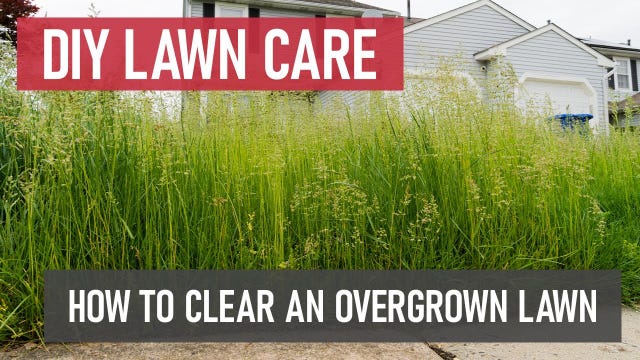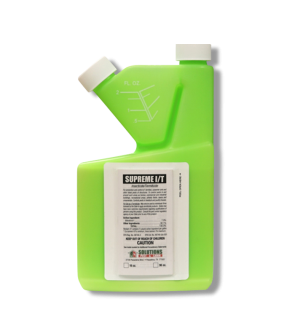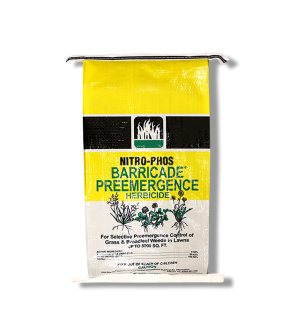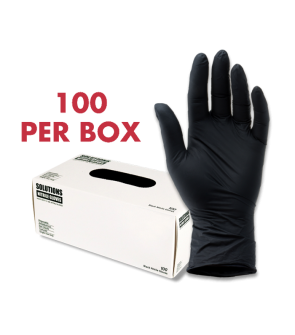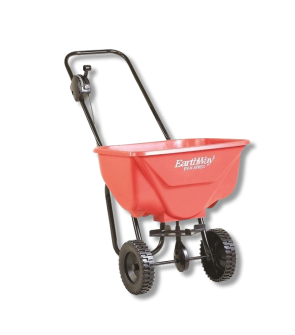Gain access to personalized product screening, the best pricing, rewards, and more!
Most Effective Products
How to Clear an Overgrown Lawn
This page is a general DIY guide to help mow and clean up your home's overgrown yard. These basic lawn care tips and professional products listed throughout this article can help reclaim your lawn's health and height.
With little rain, sunshine, and mowing, turfgrass can quickly overtake your yard in what seems like no time at all. This results in grass that has grown past your knees, which can be difficult to mow. If left untreated, it can create a suitable environment for a variety of pests, from rats to snakes and weeds. All of these affect the health and appearance of your lawn, resulting in a longer yard care program.
When the bushes have grown out of control, grass reaches a tall height, and weeds are found across your yard, it's hard to know where and when to begin. However, there is never a right time, and the longer your grass remains tall, the worse the infestation will become. By following the methods and products listed in this DIY guide, you will clear tall grass and leave behind a healthy, controllable lawn without adding additional damage to it and your equipment being used.
Clean Up Yard Debris

First, you should pick up objects like fallen sticks, rocks, fallen trees, broken pottery, garden décor, and other debris from the grass.
These objects create conditions for pest activity by providing shelter, shade, and causing the lawn to retain more moisture than necessary. Additionally, these objects will get in the way of any equipment like your lawn mower or weed trimmer.
Leaves and other fallen plant debris should be cleaned up in both the spring and fall to allow necessary sunlight, nutrients, and water to reach your lawn.
Rake fallen plant debris into a pile, then place it into a disposable bag that can be sealed. Discarded debris should be properly disposed of and placed in an outdoor trash can several feet from your home's foundation.
Mark any objects too large to be moved to avoid running them over with your mower.
Trim the Lawn
Before mowing your overgrown lawn, it's best to shorten the turf blades first with a weed trimmer, hand-held scythe, or sickle.
Avoid using a lawn mower first, as the tall grass may overwork the mower and overheat the engine.
Trim grass blades until they are about half of their original height, which should leave the turf at 6 to 8 inches high. The goal of trimming is to give the turf the ability to support its weight. Remember to rake and place all grass clippings in a sealable plastic bag when trimming.
Depending on how overgrown the lawn is, a second trimming may be required after a week has passed from the first trimming.
Give your lawn enough time to recover by allowing a week to pass before mowing with a regular lawn mower.
Afterward, rake away the grass clippings.
Mow
Now that the turf has been trimmed, you can use your mower to get a uniform look across your grass. This process should be strategically placed.
Once you select your mower, inspect the machinery before using it. Mow when the turf is dry and when no immediate rainfall is forecasted within spring, summer, and early fall.
Clear your mower from cut grass clippings and other debris while it is turned off. Ensure the blades are still sharp. If blunt, they may pull up the grass, damaging your turf by scalping or leading to the death of the lawn.
Set the blades to a desired mowing height. A general rule is to cut no more than 1/3 of the grass blades.
At a slow pace, mow your lawn starting from the perimeter and then inwards to protect the grass blades and engine from being overworked.
Repeat the mowing process once per week until the lawn reaches the desired level of growth, then continue mowing as needed to maintain its height. Typically, most turfs are recommended to be mowed when they exceed 3 inches or more in height.
Different species of grass have different desirable heights. For example, St. Augustinegrass should be mowed to a height of around 3 inches, give or take about half an inch, depending on the climate.
It would be best to change the mowing direction each time to help encourage the straight growth of turfgrass blades. Once mowing is complete, treat your lawn with irrigation once per week to help replenish the nutrients and vitamins lost.
Correct Drainage Issues
Once the lawn has been mowed, rake it over once more to remove grass clippings and fallen leaves.
The excess build-up of turf, leaves, and other organic matter can cause your yard to have uneven surfaces from puddles of water or to be consistently wet.
Before heavy rain can occur, make sure your drainage pipes and rain gutters are cleaned of debris. This can help prevent your lawn from overwatering and being submerged underneath water.
It's not unusual for parts of your yard to become sloped due to low maintenance, competition from overgrown turf and tree roots, and an abundance of water.
If this happens, fill holes in your yard with landscaping sand and direct rain gutter downspouts away from the affected area. However, do not add so much landscaping sand that it covers the turf.
Remove Weeds and Pests
Once your lawn has reached an appropriate grass height, you can focus on the pests, broadleaf weeds, grassy weeds, brush, and pests that festered in it. To avoid harming your turf, we recommend using spot applications with herbicides to eliminate the weed or brush directly.
To get rid of weeds growing on your property, use an herbicide like 2, 4-D Amine.
2,4-D Amine Selective Post-Emergent Herbicide is a post-emergent herbicide that will control weeds that have already emerged from the ground. It is also a selective product, meaning it can be applied to control labeled weeds without harming the surrounding grass.
While 2, 4-D Amine can be applied to control many weeds in many turf types, be careful not to use this product in lawns with susceptible warm-season grasses.
Keep in mind the best time to control weeds is when they are young and actively growing, before seeds have been produced.
For spot treatments with 2, 4-D Amine, apply the labeled rate of 2 to 3.16 pints of product per acre. For smaller applications, this breaks down to 0.72 to 1.1 fluid ounces per 1,000 square feet.
Spot-treat any weed you’ve found growing in your turf. Use a fan or cone spray pattern to ensure the leaves are fully coated, and spray the weed to the point of wet but not runoff.
Be sure to spray on calm days when temperatures are not too hot and when wind speeds are low to minimize drift.
Once weeds have been addressed, take time to control insect pests with an insecticide like Supreme IT.
Supreme IT is 7.9% bifenthrin, which helps to kill up to 70 different types of insects in lawns, around home foundations, within homes, and more. Once dried, it creates a residual that continues to kill and repel labeled pests for up to 90 days after application.
For general insect control, apply 1 fl. oz. of Supreme IT per gallon of water per 1,000 sq. ft.
Determine how much product to use by measuring the square footage of the treatment area. To do this, measure the length and width of the treatment area in feet, then multiply (length X width = square footage). To find acreage, divide the square footage by one acre (square footage / 43,560 sq. ft. = acres).
Broadcast your finished solution evenly over your lawn with a fan or cone spray pattern and spraying the grass to the point of wet but not runoff.
Do not let any people or pets around the treated areas until the product dries completely.
Labeled pests that come in contact with the product or its residual will have their nervous systems impacted and will die in several hours.
Each of these products will need to be mixed with water, so you will want to use a handheld pump sprayer. Fill the sprayer halfway with water, add a measured amount of product, and then pour the remaining half of the water into the spray tank. Close the sprayer lid and shake to ensure even agitation.
Apply Fertilizer & Pre-Emergent Herbicide
When your overgrown lawn has been tamed and all weeds and pests removed, you can proceed with a fertilizer appropriate for that season.
Your grass will need to stay healthy in order to stave off any diseases, fight off weeds, and recover from minor pest damage.
During a season when grass is growing vigorously, like in spring, use a fertilizer like the Solutions 15-5-10 Weed & Feed with Trimec. This product in particular will eliminate weeds while providing a steady supply of nutrients for your turf.
For general applications, you can distribute at a rate of 3.2 to 4.0 pounds of product per 1,000 square feet.
After your lawn has been fertilized, you can prevent weed seeds from emerging from the ground by applying a pre-emergent herbicide like Barricade.
Barricade is a granular pre-emergent herbicide that creates a chemical barrier that stops weed seeds from emerging from the soil.
Apply Barricade with a push spreader or a handheld spreader for smaller areas.
Over turf grass, weigh 1.5 to 4.0 pounds of product to distribute over 1,000 square feet.
For landscape ornamental plants, use 2.5 to 5.94 pounds per 1,000 square feet.
Add your granules to the spreader and evenly apply the product over the treatment area. Activate the granules by irrigating your lawn with at least half an inch of water.
Proper application will protect your lawn from new weed development throughout the season.
Key Takeaways
How to Clear Out Weed and Brush in Overgrown Grass?
- When your yard is overrun with weeds or brush, a post-emergent herbicide that can be used as a spot treatment is often the best form of control. To get rid of grassy and broadleaf weeds in your tall turf, use 2,4-D Amine Selective Post-Emergent Herbicide.
What Season Should Overgrown Yard Be Treated
- There is no best season to control overgrown turf, but spring or early fall would usually be ideal. During these periods, turf growth is slower, and weeds are commonly known to germinate during these periods.
How to Prevent Overgrown Lawn
- Take some time to inspect your yard for fallen debris, rocks, and other man-made objects. Remove these obstacles, then mow until 1/3 of the turf blades are removed. You will want to maintain a height of 3 inches for most turf types. Mow at least once a week when your turf exceeds this height and maintain appearance with ongoing weed and shrub treatments.






